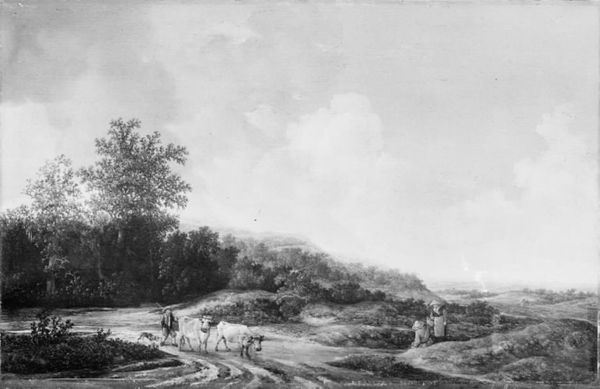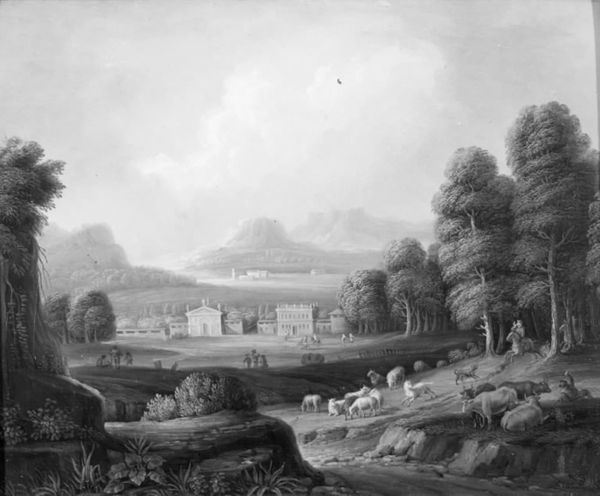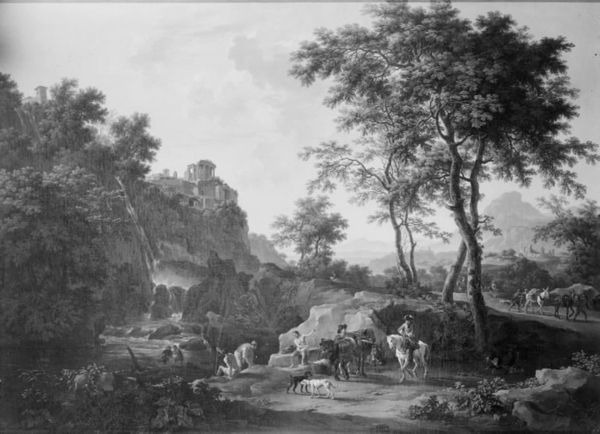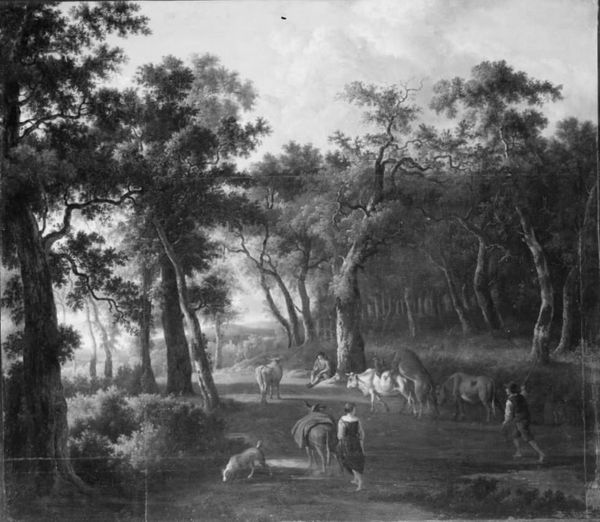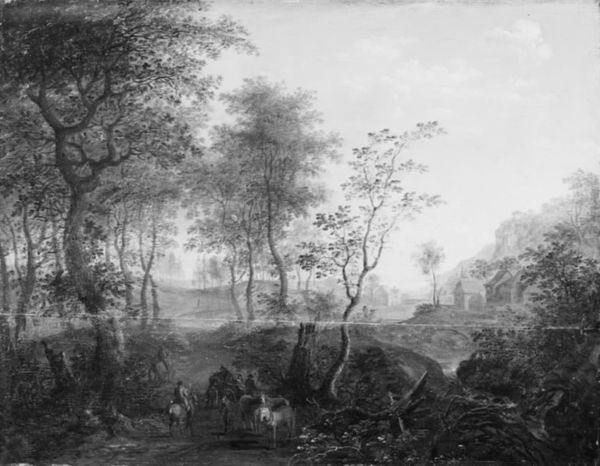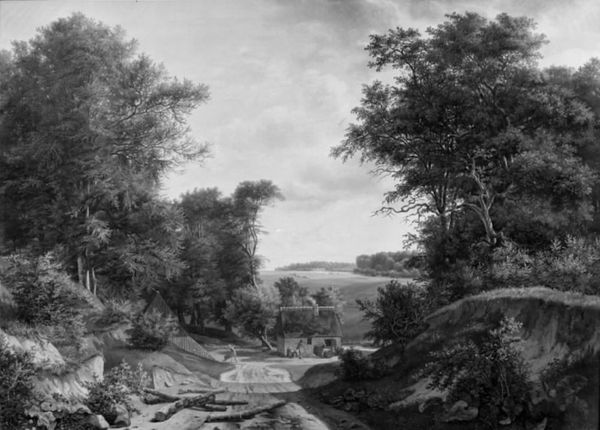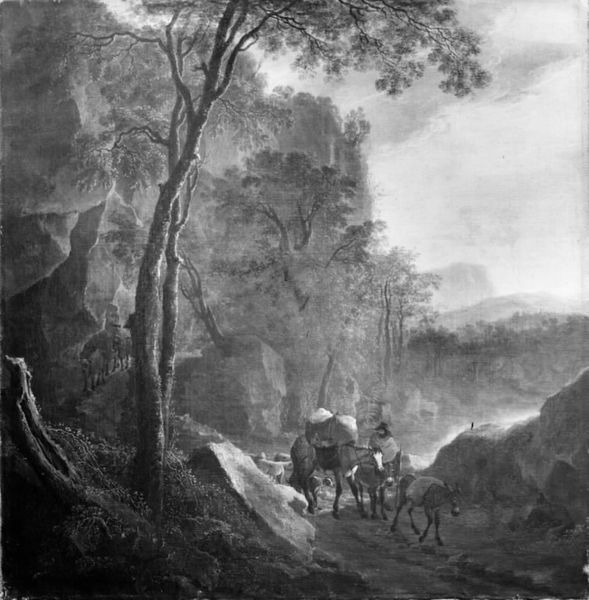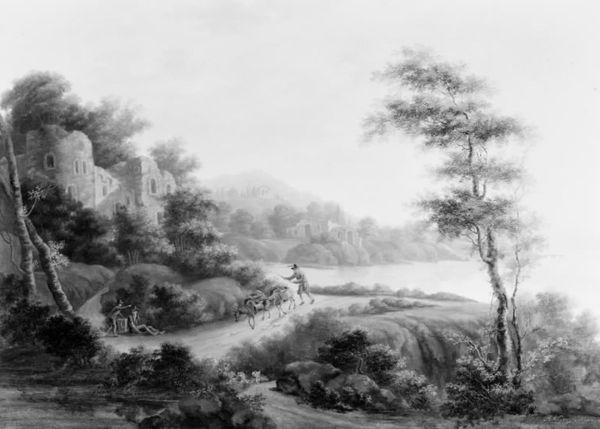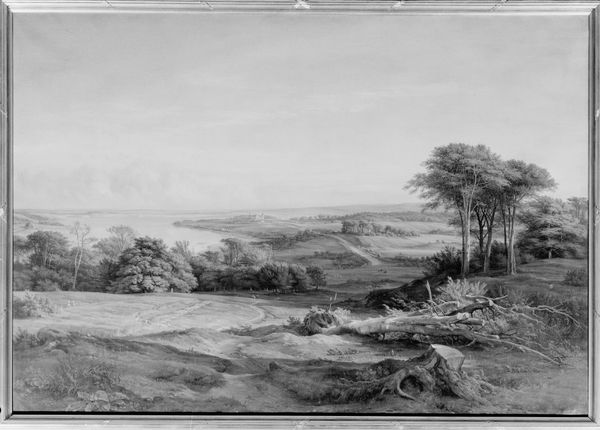
drawing
#
drawing
#
landscape
#
romanticism
#
black and white
#
monochrome photography
#
monochrome
#
realism
#
monochrome
Dimensions: 281 mm (height) x 397 mm (width) (bladmaal)
Editor: This is "Landskab med kvæg og hyrdepar," a landscape by Johann Christian Klengel, dating sometime between 1760 and 1824. It's a drawing, so ink on paper I presume, and the scene, rendered in monochrome, presents a serene, almost idyllic pastoral setting. I’m struck by how seemingly simple the composition is. What are your thoughts? Curator: The "simple" composition is precisely where we should start, actually. Consider the labor involved in producing the paper itself, and then the skilled hand required to create this nuanced scene. What appears effortless reflects a complex chain of material and human inputs. Where were the raw materials sourced? Who processed them? This drawing exists within a network of production and consumption. Editor: So you’re focusing on the physical processes that led to this image? Curator: Absolutely. Look at how Klengel represents labor in the scene – the herdsmen are almost romanticized. But what about the unromantic labor required to sustain the very society that produces art like this? The consumption patterns enabled by those labor systems made art production possible. Does that tension change your perspective? Editor: It does. I was initially just appreciating the aesthetic, but now I’m considering the socio-economic forces that underpin the artwork's existence. How the landscape almost obscures a church behind trees… Curator: Indeed. The artist and the drawing are both embedded within – and products of – the society that produced it, just like the workers and landowners, no? What new perspective are you walking away with today? Editor: I am reminded that the art object doesn't appear from thin air, there is an element of power, consumption, and labor built-in. This provides an entirely fresh point of view for the piece, and similar works. Curator: Exactly. Remember to ask 'how' and 'why' was it made.
Comments
No comments
Be the first to comment and join the conversation on the ultimate creative platform.


